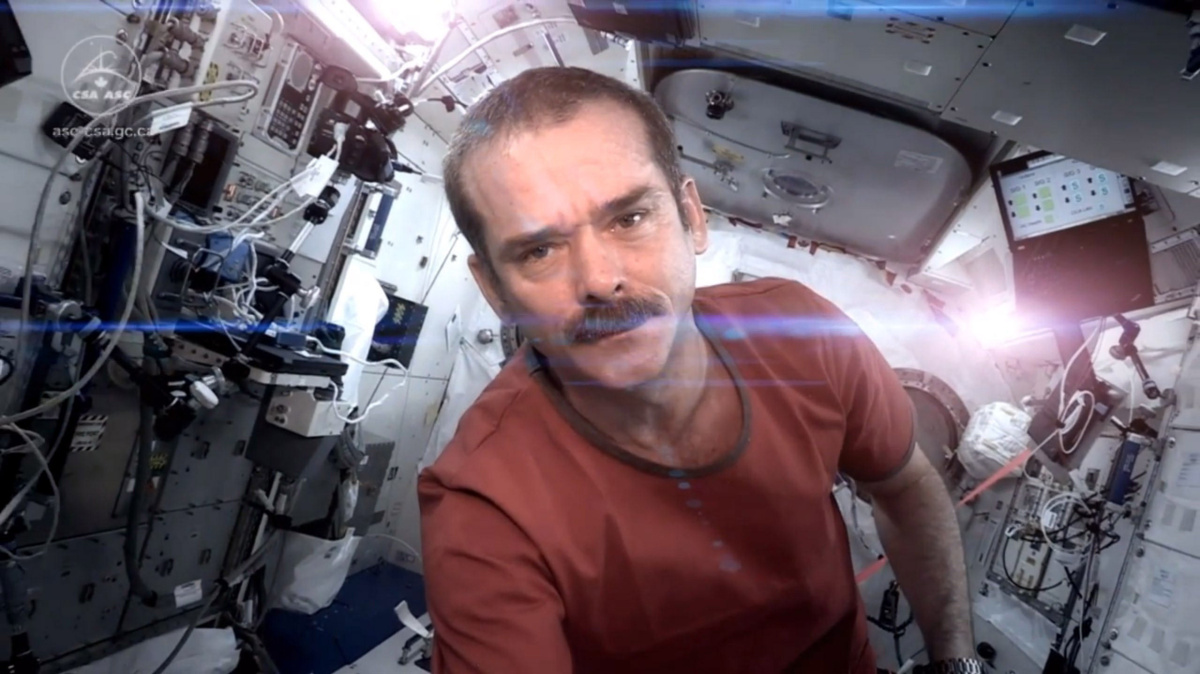Two weeks ago, when Alfonso Cuaròn’s Gravity rocketed to the top of the box office, Neil deGrasse Tyson went into a well-publicized Twitter rant about the technical inaccuracies present in the film. Tyson went on to say that he truly enjoyed the film, and to clarify that his criticisms were actually a compliment to the standard of scientific accuracy the film set for itself with its otherwise flawless presentation of microgravity, vehicle structure, and other aspects of spaceflight. With the confusion cleared up, one tweet continued to stand out—this one—pondering why people got more excited for “Cloonified” space than real space. Coming as it did in early October when NASA’s public activities were being halted for the government shutdown, this tweet seems especially poignant.
As demonstrated by the emotion surrounding events like the moon landing and the arrival on Mars of the Curiosity rover (which drew massive crowds in Times Square), the public is capable of becoming excited about real-life space. Anchored by George Clooney and Sandra Bullock, Gravity, with its realistic portrayal of present-day space exploration, is one of only three movies this year to hold the number one spot at the box office for three straight weekends. What is it about these sorts of space-related endeavors that holds our attention, and why haven’t we been able to translate that interest into a political incentive to support NASA financially?
What makes Gravity resonate with viewers? Many commentators have suggested that it’s the visuals: the stunning views of the Earth from the eyes of the astronauts, the magical but foreign behavior of objects in microgravity, the incredible—and very real—depictions of modern space infrastructure, etc. have been extolled as a revolution in what is possible with film much like Jurassic Park was in 1993. NASA, with real cameras in real space, is just as capable of providing these breathtaking images of life in space, as even a cursory glance through the Twitter pages of astronauts currently in flight will demonstrate. The scenes of Clooney and Bullock repairing the Hubble Space Telescope are modeled after IMAX footage of an actual Hubble repair mission. There are even a number of astronauts (including one rock star) whose looks are capable of competing with those of the Grey Fox himself.
Maybe the answer is action, NASA simply can’t deliver what Hollywood can; astronauts in bulky spacesuits move pretty slowly, and the voyage from the Earth to Jupiter is long and boring unless you can mix it up with an asteroid encounter or two. Clooney and Bullock, on the other hand, spend their time evading orbital debris and (spoiler) hijacking space stations. As it turns out, however, space is full of excitement and adventure. Launches and landings combine the universally attractive concepts of high speeds, controlled explosions, and fire. If it’s life-threatening danger you fancy, real space offers that too: an obvious example is the incredible journey of Apollo 13, also immortalized in film. But even as recently as this year Italian astronaut Luca Parmitano nearly drowned when his suit’s coolant water began to leak into his helmet during a spacewalk.
Real space is capable of offering the beauty and excitement of the masterpiece that is Gravity, so what is it missing from NASA that Hollywood can provide? I would argue that the missing factor is audacity, the determination to achieve the impossible. In Gravity (more spoilers) space is literally exploding around our protagonists, but they are determined to make it home, even if it means hitchhiking across the sky. The odds of their success are hilariously low, but they persevere through technical savvy, creative thinking, and sheer will. Occasionally real space can offer that kind of audacity, like when a nation barely capable of sending a single man into space promises to send humans to the moon and back within ten years, or when a scientist with a Mohawk claims his team can use a rocket-crane to land an atomic minivan within a particular crater on a red rock millions of miles away. The math checks out, and the scientists know it’s possible, but it sounds crazy. Attempting to do what laypeople believe to be impossible, and then succeeding, is what gets people excited about space, both in Gravity and in real life. With the landing of Curiosity as a major exception, that kind of audacity has been sorely lacking in modern American space policy.
As apathetic as people may seem, Americans are capable of falling in love with space travel. I have heard level-headed humanities majors telling me, seriously, that watching Gravity changed their life. My parents remember exactly where they were when Neil Armstrong took that one small step, a moment that defined for them what it meant to be an American and to be a human. The space program entered the malaise it finds itself in not because the public stopped caring, but because policymakers stopped dreaming. In a newspaper editorial in 2011 space heroes Jim Lovell (Commander of Apollo 13), Neil Armstrong, and Gene Cernan (Commander of the final Apollo moon landing) attacked the Office of Management and Budget and the Obama Administration for allowing President Bush’s plan to build a moon base and go to Mars to suffer budget cuts and die, saying that Obama was abandoning JFK’s legacy as a dreamer.
My advice to public officials who want to support NASA: dream big, be audacious, and don’t let a nearsighted administration block the way. If the United States publicly sets an ambitious goal for itself in space and takes serious steps to attain that goal, it will become a winning issue. The success of Gravity demonstrates that space travel has not yet lost its luster. If public officials (or even private ones) can seize this moment, space exploration can get the kick-start it has needed for decades. America’s reputation and technological superiority are at stake, and with a 440 kiloton explosion over Russia earlier this year as a reminder, the fate of the human race is as well.
